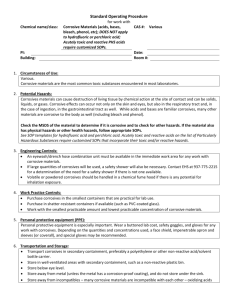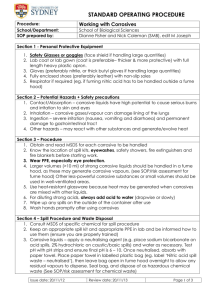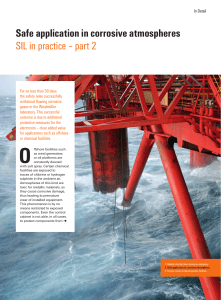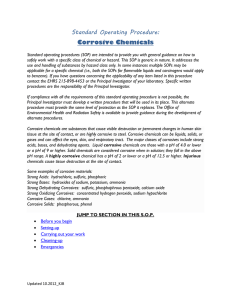Corrosive Materials: Why They Are So Dangerous Corrosives are
advertisement
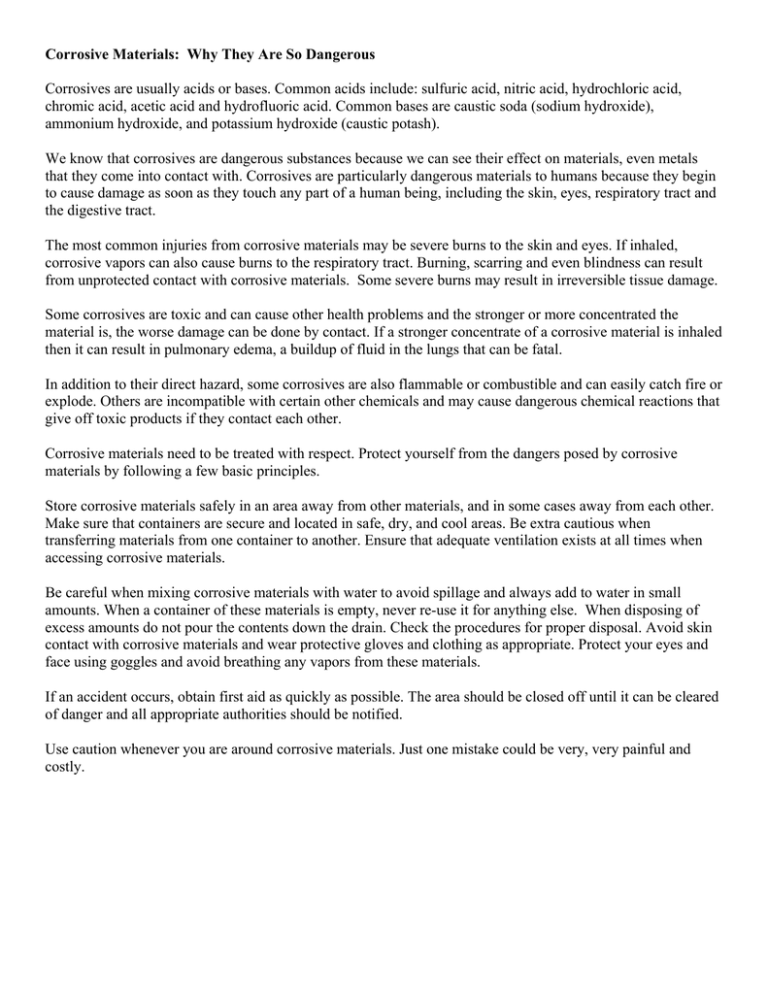
Corrosive Materials: Why They Are So Dangerous Corrosives are usually acids or bases. Common acids include: sulfuric acid, nitric acid, hydrochloric acid, chromic acid, acetic acid and hydrofluoric acid. Common bases are caustic soda (sodium hydroxide), ammonium hydroxide, and potassium hydroxide (caustic potash). We know that corrosives are dangerous substances because we can see their effect on materials, even metals that they come into contact with. Corrosives are particularly dangerous materials to humans because they begin to cause damage as soon as they touch any part of a human being, including the skin, eyes, respiratory tract and the digestive tract. The most common injuries from corrosive materials may be severe burns to the skin and eyes. If inhaled, corrosive vapors can also cause burns to the respiratory tract. Burning, scarring and even blindness can result from unprotected contact with corrosive materials. Some severe burns may result in irreversible tissue damage. Some corrosives are toxic and can cause other health problems and the stronger or more concentrated the material is, the worse damage can be done by contact. If a stronger concentrate of a corrosive material is inhaled then it can result in pulmonary edema, a buildup of fluid in the lungs that can be fatal. In addition to their direct hazard, some corrosives are also flammable or combustible and can easily catch fire or explode. Others are incompatible with certain other chemicals and may cause dangerous chemical reactions that give off toxic products if they contact each other. Corrosive materials need to be treated with respect. Protect yourself from the dangers posed by corrosive materials by following a few basic principles. Store corrosive materials safely in an area away from other materials, and in some cases away from each other. Make sure that containers are secure and located in safe, dry, and cool areas. Be extra cautious when transferring materials from one container to another. Ensure that adequate ventilation exists at all times when accessing corrosive materials. Be careful when mixing corrosive materials with water to avoid spillage and always add to water in small amounts. When a container of these materials is empty, never re-use it for anything else. When disposing of excess amounts do not pour the contents down the drain. Check the procedures for proper disposal. Avoid skin contact with corrosive materials and wear protective gloves and clothing as appropriate. Protect your eyes and face using goggles and avoid breathing any vapors from these materials. If an accident occurs, obtain first aid as quickly as possible. The area should be closed off until it can be cleared of danger and all appropriate authorities should be notified. Use caution whenever you are around corrosive materials. Just one mistake could be very, very painful and costly.
